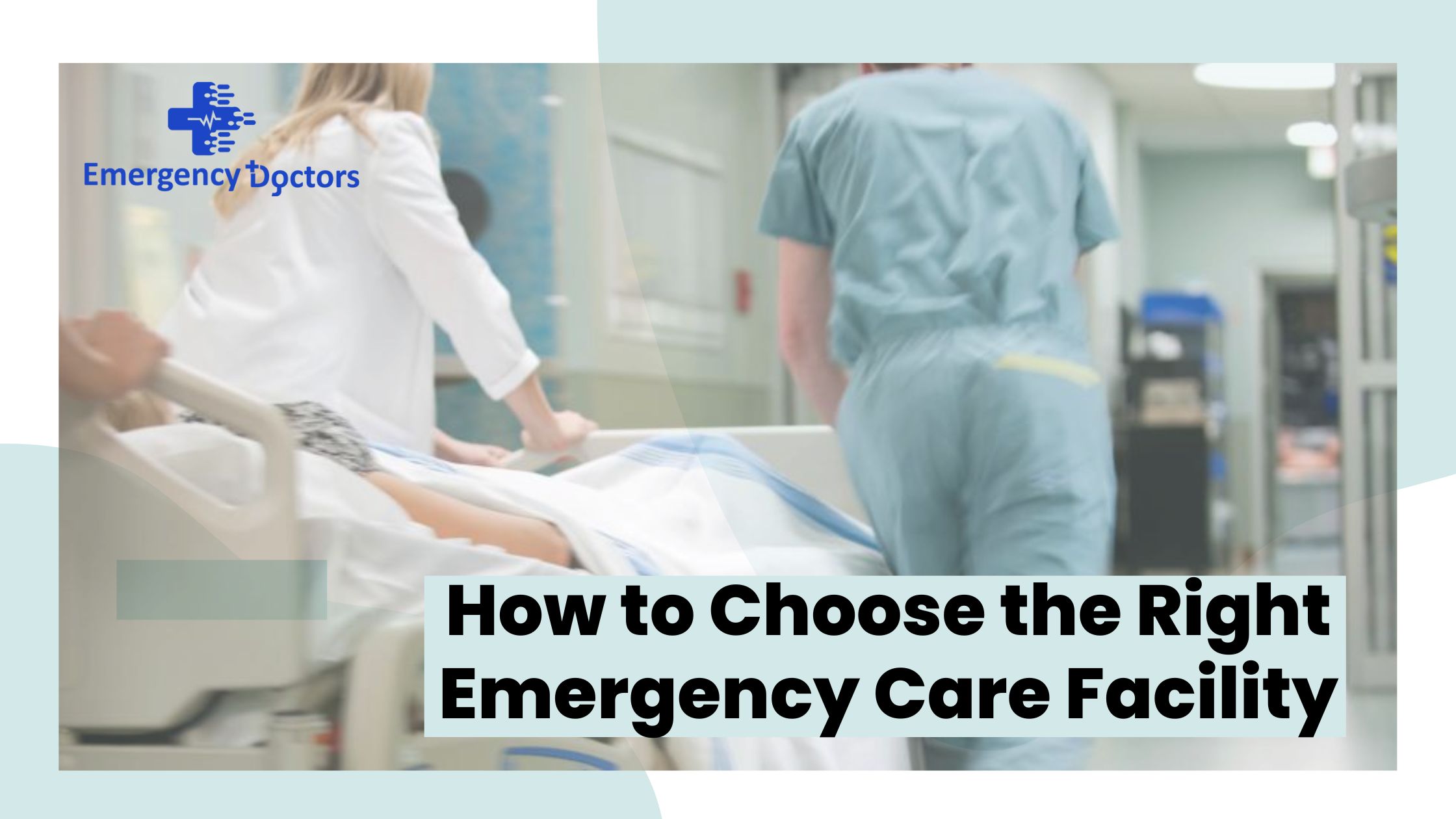
When faced with a medical emergency, making the right choice about where to seek care can be a matter of life and death. The decision can be overwhelming, especially during stressful situations. Understanding how to choose the right emergency care facility ensures you or your loved ones receive the best possible care promptly. Here’s a comprehensive guide to help you make an informed decision.
Emergency care is provided in various settings, each designed to address specific levels of medical urgency. Here are the main types of facilities:
a. Emergency Rooms (ERs): Located within hospitals, ERs are equipped to handle severe and life-threatening emergencies like heart attacks, strokes, severe injuries, and major traumas. They operate 24/7 and have specialized staff and equipment.
b. Urgent Care Centers: These facilities handle non-life-threatening conditions that require immediate attention but are not severe enough for an ER visit. Examples include minor fractures, infections, and cuts needing stitches. They typically have extended hours but are not open 24/7.
c. Freestanding Emergency Rooms: Similar to hospital ERs but not attached to a hospital, these facilities provide emergency care for serious conditions. They offer many of the same services as hospital ERs but may require transfer to a hospital for further treatment.
d. Walk-in Clinics: Suitable for minor illnesses and injuries, these clinics offer convenient access to care without an appointment. They are typically open during regular business hours and are staffed by nurse practitioners or physician assistants.
Accreditation and certifications indicate that a facility meets certain standards of care. Look for facilities accredited by reputable organizations such as The Joint Commission or certified by the American College of Emergency Physicians. These accreditations ensure the facility adheres to high standards of patient care and safety.
Different emergency care facilities may specialize in specific areas of medicine. When choosing a facility, consider whether it has the necessary specializations and services to address your specific emergency. For example, if you have a cardiac issue, a facility with a strong cardiology department and access to immediate cardiac interventions is crucial.
The availability of advanced medical technology and equipment is critical for effective emergency care. Ensure the facility has up-to-date diagnostic tools like CT scanners, MRI machines, and ultrasound equipment. Access to advanced life-support equipment and specialized treatment options can significantly impact the quality of care.
The quality of care you receive heavily depends on the expertise and experience of the medical staff. Research the credentials of the facility’s doctors, nurses, and other healthcare professionals. Look for board-certified emergency physicians and staff with extensive experience in handling emergencies.
In an emergency, proximity and ease of access are vital. Choose a facility that is conveniently located and easy to reach from your home or workplace. Consider the availability of parking and whether the facility is accessible via public transportation. In some cases, a slightly further facility may be worth the extra travel time if it offers superior care.
Patient reviews and testimonials can provide valuable insights into the quality of care provided by a facility. Look for feedback on the facility’s responsiveness, professionalism, and overall patient experience. Online reviews on healthcare websites and social media platforms can help you gauge the facility’s reputation.
Emergency care can be expensive, so it’s important to consider your insurance coverage. Check whether the facility accepts your insurance plan and understand what costs are covered. Some facilities may have higher out-of-pocket expenses, so clarify the costs involved before an emergency arises.
During an emergency, time is of the essence. Research the average wait times at the facility to ensure you receive prompt care. Some facilities provide real-time wait time updates online. Efficient facilities with streamlined processes can significantly reduce waiting times and improve patient outcomes.
If possible, visit the facility in advance to get a sense of its environment and operations. Take note of the cleanliness, organization, and overall atmosphere. A visit can help you feel more comfortable and confident in your choice during an actual emergency.
Choosing the right emergency care facility involves careful consideration of several factors, including the type of facility, accreditation, specializations, technology, medical staff, location, patient reviews, insurance coverage, wait times, and personal comfort. By taking the time to research and evaluate these aspects, you can make an informed decision that ensures the best possible care in a medical emergency.
At Emergency Doctors, we are dedicated to providing top-notch emergency care tailored to your needs. Our experienced medical professionals, advanced technology, and patient-centered approach make us a trusted choice for emergency care. Visit our website for more information and resources to help you navigate emergency situations with confidence.